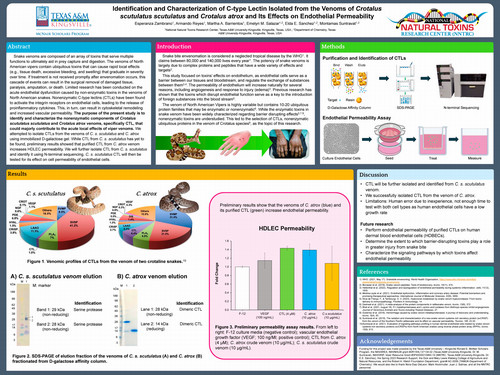Snake venoms are composed of an array of toxins that serve multiple functions to ultimately aid in prey capture and digestion. The venoms of North American vipers contain ubiquitous toxins that can cause rapid local effects (e.g., tissue death, excessive bleeding, and swelling) that graduate in severity over time. If treatment is not received promptly after envenomation occurs, this cascade of events can lead to the surgical removal of damaged tissue, paralysis, amputation, or death. Limited research has been conducted on the acute endothelial dysfunction caused by nonenzymatic toxins in the venoms of North American snakes. The present study seeks to expand available information regarding the effect of nonenzymatic snake venom toxins on endothelial barrier dysfunction. Our objective is to characterize the effects of crotalid toxins, specifically C-type lectins (CTL) and vascular endothelial growth factors (VEGF), on the dysfunction and permeability of human dermal blood endothelial cells (HDBEC) and human dermal lymphatic endothelial cells (HDLEC). To date, CTL has been isolated from Crotalus atrox venom using an immobilized D-galactose gel affinity column and identified by N-terminal sequencing. Preliminary tests have been done to characterize CTL’s effect on endothelial permeability of HDLECs. Attempts to isolate CTL and VEGF from Crotalus scutulatus scutulatus venoms are ongoing. Permeability tests on HDBECs, and further testing on HDLECs is ongoing. Preliminary data shows that crude C. atrox venom and C. atrox CTLs increase endothelial permeability.
Faculty Mentor: Dr. Montamas Suntravat
National Natural Toxins Research Center


